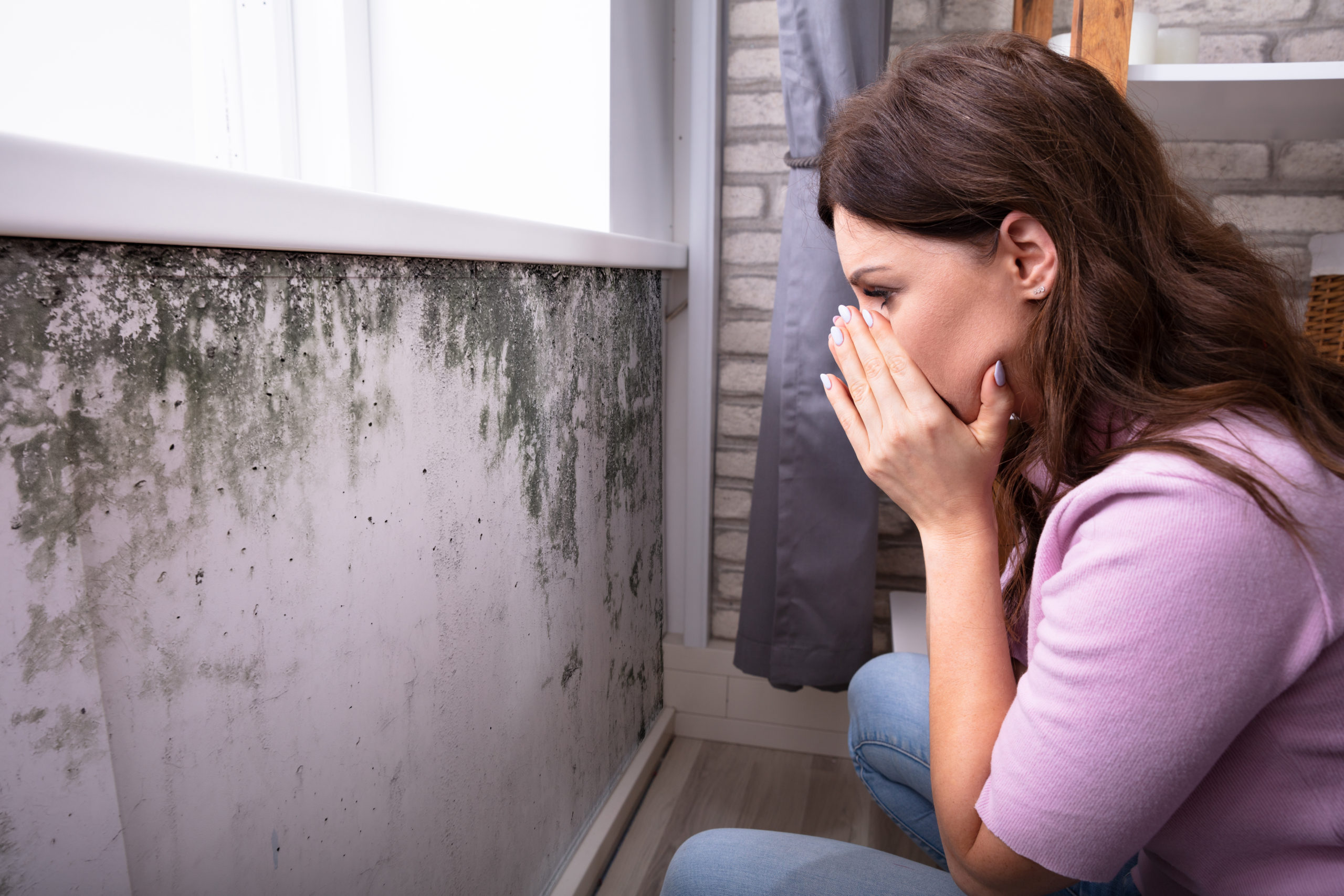Mold: Warning Signs & Prevention

Mold is a type of fungi that can grow indoors or outdoors; usually found in warm, damp, and humid environments. Although mold plays an integral part in our ecosystem, when it finds its way into your home it can at least be a nuisance- and at worst, a serious danger to your health. Continue reading to learn how to spot the warning signs of mold and how to prevent mold in your home.
Warning Signs
Allergies and Other Health Issues
Some symptoms of mold allergies include coughing, sneezing, sore itchy throat, irritated itchy skin, congestion, runny nose, wheezing and difficult breathing, and watery or itchy eyes. Mold allergy symptoms are very similar to the common cold symptoms. If you are unsure if your symptoms are due to mold in your home, take notice of how you feel when you go outdoors or leave your home for an extended amount of time. If your symptoms get better once you leave your home, there is a good chance that mold is the culprit.
Unusual Odors
Not all mold emits a smell, but many do. When mold does have a smell, it is often described as a “musty” smell. Others have described mold as smelling earthy, meaty, or resembling the smell of wet socks or rotten wood. All homeowners can surely agree, the pungent smell of mold is not pleasant! If you smell this unpleasant odor anywhere in your home, please seek out a mold professional for help.
Water Leaks and Damage
Any amount of moisture that sits long-term will inevitably lead to mold; it takes mold seventy-two hours in humid conditions to begin forming. Mold resulting from a leak in your home may not be as easy to spot, especially if it is hiding behind a wall or in another location that isn’t easily accessible. Be sure to look around your home for water stains and discoloration on the walls, floors, or ceilings. Notice if your walls or ceilings have any bubbling, cracking, or peeling of paint or wallpaper. These are all warning signs that you’re likely dealing with some form of water damage which will lead to mold.
Clean Immediately
If you do happen to spot mold developing in your home, it is very important to properly clean it right away as it can impact the air indoors. This is especially important if you have small children, seniors, pregnant women, or anyone with a compromised immunity. There are many products on the market to clean mold effectively. However, if the mold is widespread or causing allergies, call a mold professional right away. A mold professional will be able to safely remove the mold and can even give suggestions on how to avoid the mold growth again.
Prevention
As previously mentioned, mold grows in damp, humid places. The first rule of preventing mold is making sure you avoid any buildup of moisture from humidity in your home. A good way to help keep humidity levels stable at home is using a dehumidifier in the most humid part of the home, which is typically the basement or attic. Be sure to fix all leaks and seepage throughout your home. If water is entering the home from the outside, your options range from simple landscaping to extensive excavation and waterproofing. It’s ideal to have the ground slope away from your home to avoid these issues.
If you do notice a leak but no mold is present, you will want to get the issue repaired and make sure the affected area is dried properly with fans and a dehumidifier. Practicing proper ventilation while cooking and using the shower also help keep moisture from building up on the walls which could lead to mold issues down the road.




